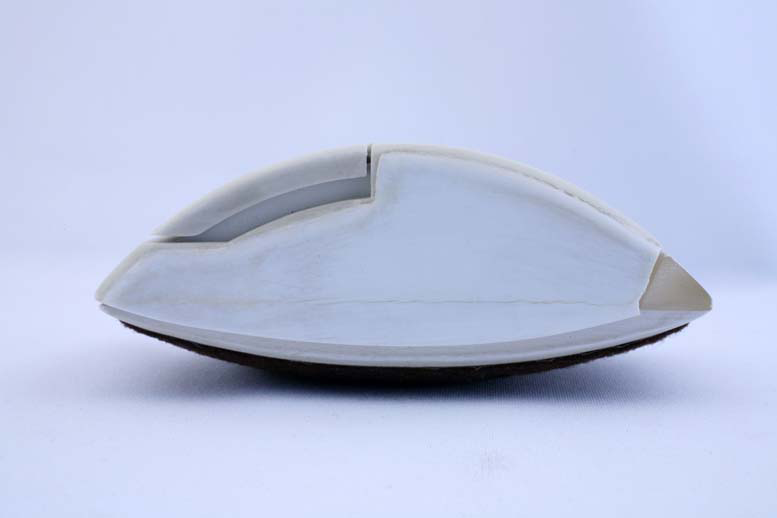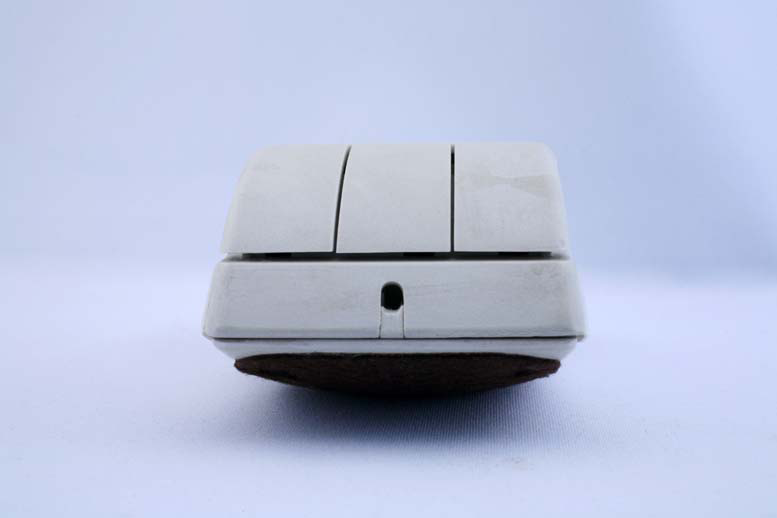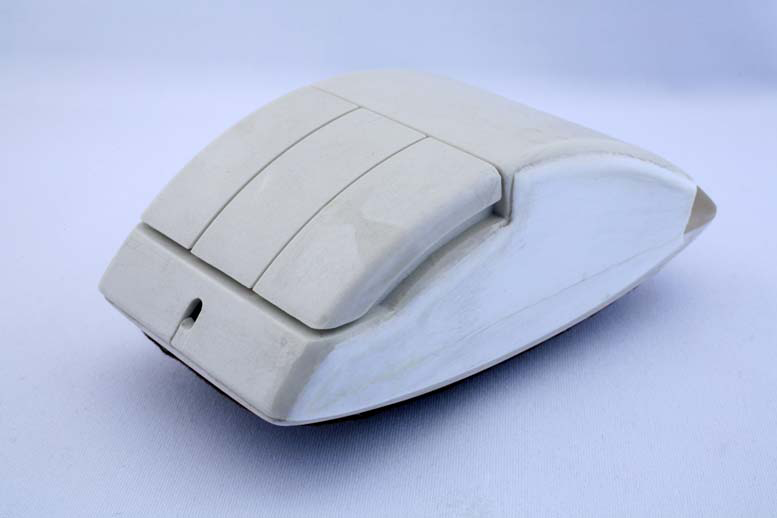|
Rockin' Mouse    Bill Buxton's NotesThe Rockin' Mouse was one of those things that one had to try. It was a project done in our research group at the 3D graphics software company, Alias|Wavefront, in 1996. It was done by my colleagues, Ravin Balakrishnan, Thomas Baudel, Gord Kurtenbach, and George Fitzmaurice. We were working in 3D graphics, so were interested in exploring novel ways that might extend the number of degrees of freedom that we could control with a mouse, without degrading its performance in conventional tasks. We were also pretty aware of other work that had gone on in this direction, such as Venolia's pioneering 1989 work at Apple, making the first scroll-wheel mouse. The idea that Ravin, Thomas, Gord and George pursued – I was not personally involved in the project, other than being the group head of the lab – was to modify what appeared as conventional mouse, by making the bottom concave. Thus, one could move it and work the buttons like a normal mouse, but also rock it left-right and/or forward-backward, thereby gaining access to two additional degrees of freedom. In reality, the way that the mouse was actually implemented was to mount position and tilt sensors from a Wacom tablet stylus/cursor into the device, and then use the tablet as a mouse pad. It was still a relative controller, just with less conventional sensors. In some ways, the effect was making the mouse body itself into a kind of joystick. During the project, the team explored different form factors for the mouse before landing on the one shown here and used in the study. Notably, in light of my earlier comment, one of them was in the form of a movable joystick. In the study, they had subjects move an object from one location to a target position in 3D space. They compared the new mouse's performance to that of a traditional mouse. The results were positive, enough to suggest that the idea was worth further exploration – exploration that never really happened. This, in itself, is worth pointing out, as it is something that frequently happens in research, where there is always a kind of triage that needs to be undertaken to decide which, of all of the things that one might pursue, you actually allocate the resources to do so. The key thing here is that the field is full of such ideas, not abandoned because they were necessarily bad ideas; rather, because there were other things deemed to be of higher priority to do. This is one of the reasons that innovation and invention need to look back, as well as forward, since a knowledge of the literature, i.e., classic scholarship, may well point the way to innovative and relevant solutions for today's and tomorrow's problems. For example, if I were to revive the Rockin' mouse, the first study that I would do would be to see how well it worked simply to integrate pointing and scrolling. Instead of a scroll-wheel (which only scrolls in 1 dimension, normally vertically, one could just rock the mouse in the direction you want a document – such as a spreadsheet - to scroll, and it would do so at a rate proportional to the amount of tilt. I would then compare that to existing 2DOF scrolling techniques such as touch pads, joysticks or trackballs, which have been mounted on top of mice. The deeper one goes, the more questions, and the more interesting questions, one encounters! References
Bill Buxton Device Details
Company: Alias|Wavefront |
Year: 1996 |

